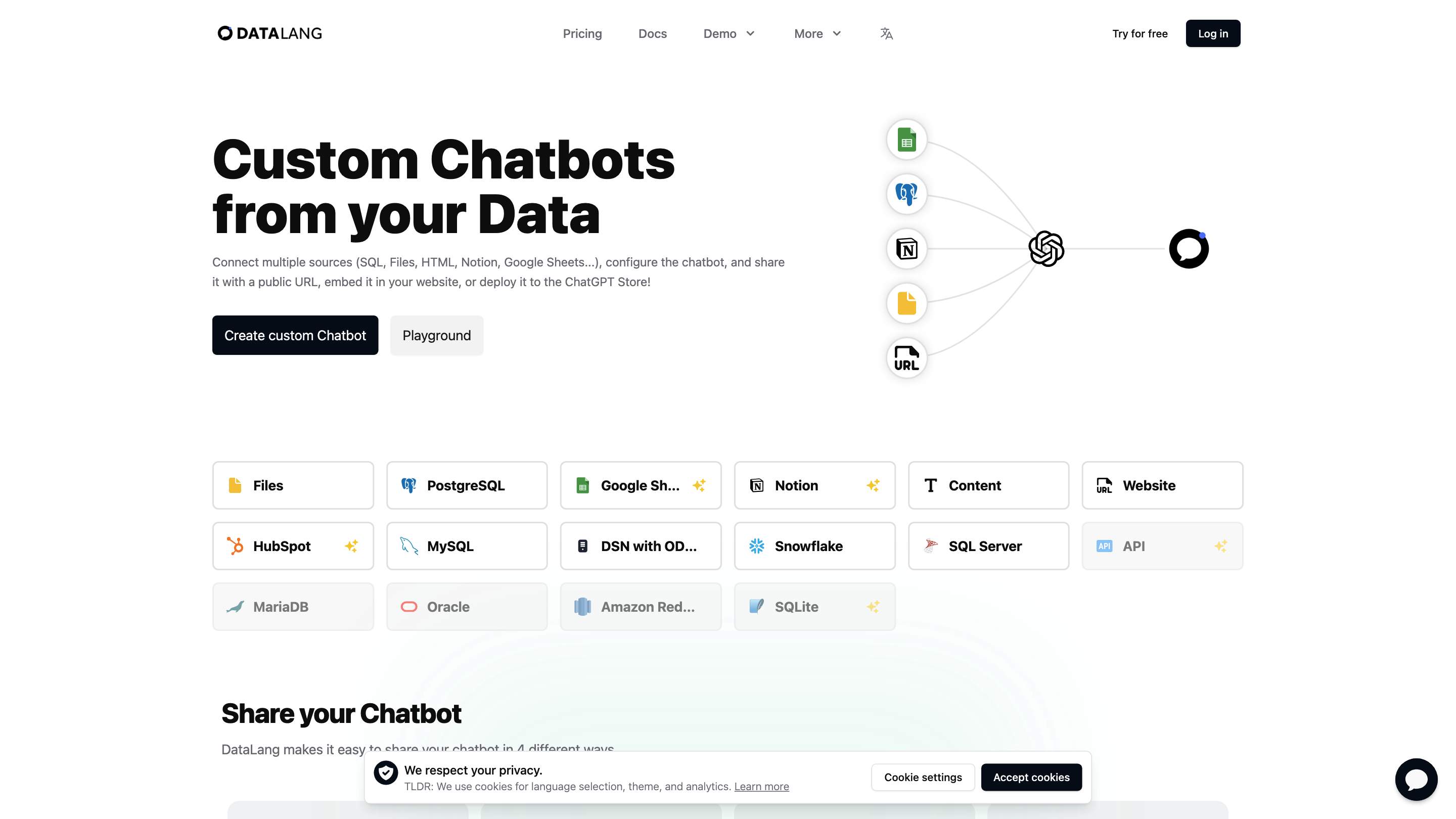DataLang
Open siteResearch & Data Analysis
Introduction
Chat with databases for intuitive data exploration.
DataLang Product Information
DataLang — Custom Chatbots from your Data
DataLang enables you to build and deploy custom chatbots that connect to multiple data sources (SQL databases, files, HTML, Notion, Google Sheets, etc.). You can configure the chatbot, share it via a public URL, embed it on your website, or publish to the GPT Store.
How it works
- Set up your Data Source — Connect databases, files, and other data sources.
- Add a Data View — Expose data from a specific source.
- Chat with your data — Train the GPT with the selected data sources.
- Share it — Public URL, website widget, or GPT Store publication.
Data Sources & Deployment Options
- Databases: PostgreSQL, MySQL, MariaDB, SQL Server, Snowflake, Oracle, Amazon Redshift, SQLite
- Files: Local and cloud-stored data sources
- Notion, Google Sheets, Content Websites, HubSpot
- Website embedding: Chatbot Widget
- Public sharing: Public URL, GPT Store publication
- API access: Interact via API
How to Use DataLang (4 simple steps)
- Set up your Data Source — Configure your sources (Databases, Files, Text, etc.).
- Add a Data View — Expose data from a specific source.
- Chat with your data — Select data sources to train the GPT with.
- Share it — Public URL, embed on your website, or publish to the GPT Store.
Plans & Pricing
- Free: Create a simple chatbot with your database. $0 per month — 1 user, 1 data source, 100 credits.
- Basic: $19 per month — 2 users, 10 data sources, 1,000 credits/month. Includes Chatbot Widget.
- Pro: $49 per month — 6 users, 50 data sources, 3,000 credits/month. Includes Chatbot Widget.
- Business: $399 per month — 12 users, 1,000 data sources, 20,000 credits/month. Includes Chatbot Widget and priority support.
Core Features
- Connect multiple data sources (Databases, Files, Text, Notion, Google Sheets, Content Websites, HubSpot, etc.)
- Create and customize a chatbot without writing code
- Expose specific data views from configured sources
- Train GPT with selected data sources for accurate responses
- Public URL sharing, website widget embedding, and GPT Store publishing
- API access for integration and automation
- Scalable plans for individuals to large organizations
How It Works
- Set up data sources
- Expose data views
- Train GPT with your data
- Share and deploy via public URL, widget, or GPT Store
Safety & Compliance Considerations
- Ensure data respects privacy and security policies when sharing publicly.
- Validate data exposure to avoid leaking sensitive information through public endpoints.
